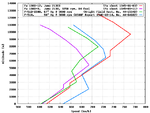phoenix7187
Airman
I have been going through action reports and kill claims on both the american side and the reich side and have come across something. After reading about100 of these reports so far I have not come across one that the pilot indcates he is engaged at or above 30K. The highest alt I have seen is 28k. The average seems to be more like 24k to 26k. With many reports happening at 22 to 24k. I always hear that fighting in the ETO was at 30K or better and how the luftwaffe fighters were at a disadvantage at this altitude. Have I just not seen any yet or did the escort fighters fly about a mile below the bomber formations? There's a big difference between 22/25 and 30+ I keep hearing quoted.


